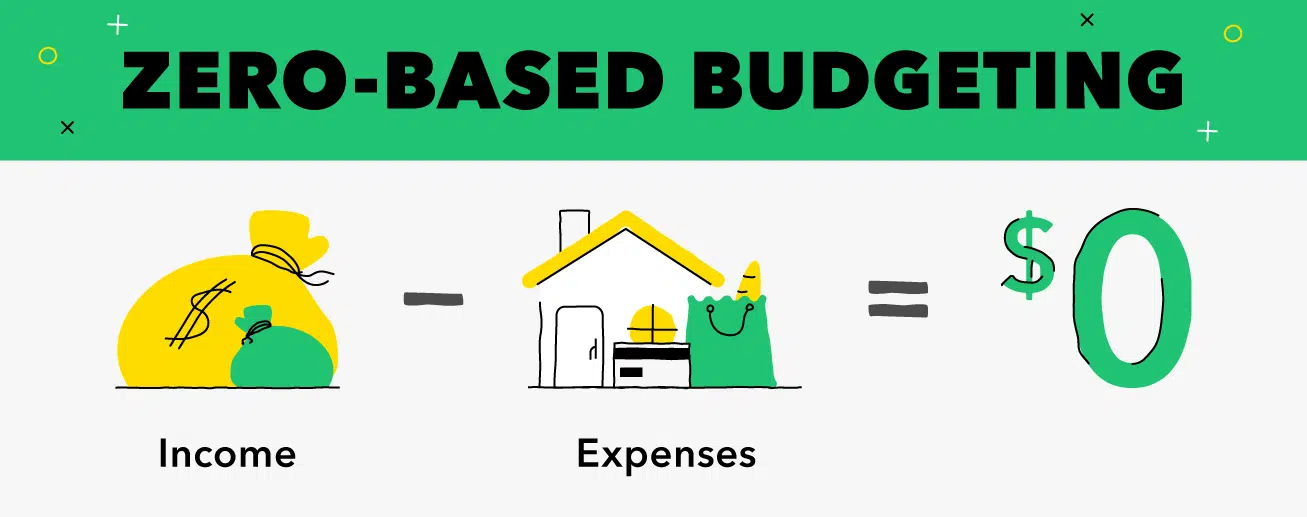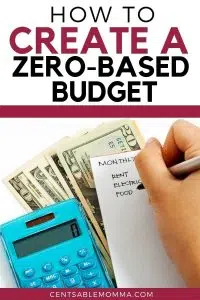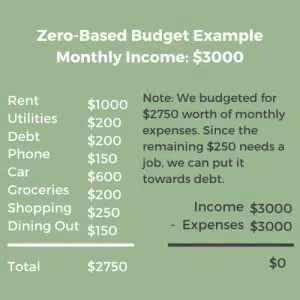How Zero Based Budgeting Works

How Zero Based Budgeting Works
The concept of zero based budgeting has been around for a long time, but it’s still relatively new to many people. This method is based on incremental changes to your current allocations. Just like learning to ride a bike, it requires some time and effort on your part. However, once you get the hang of it, the rewards are huge.
This particular concept puts every dollar to work in that, there is no surplus remaining at the end of the month. If there is leftover cash, it’s applied to debt retirement or savings.
It rewards short-term thinking
We can see also how zero based budgeting works very well for a company that needs to control spending, but it requires constant monitoring of spending and justification of every budget expenditure. This method requires input from senior leadership and time from employees. But it also rewards short-term thinking, and is not suitable for companies that want to build a long-term financial strategy.
The zero-based approach involves tracking your income and expenses every month and setting goals for yourself based on that income. By doing so, you can be more mindful of your spending and achieve your financial goals. This method also reduces the risk of overspending, which is especially beneficial for people with limited financial resources. Despite its challenges, it can prove highly beneficial for those with a liberal spending habit.
Does zero based budgeting work?
 Zero based budgeting requires modern planning software. It should be a cloud-based solution with advanced capabilities, such as machine learning, to help managers make data-driven decisions. The solution should also incorporate features such as sandboxing, approvals, and workflows.
Zero based budgeting requires modern planning software. It should be a cloud-based solution with advanced capabilities, such as machine learning, to help managers make data-driven decisions. The solution should also incorporate features such as sandboxing, approvals, and workflows.
Companies that use zero-based budgeting often experience bloating expenses. With this approach, they must justify every expenditure. In addition, they must justify all expenditures even if they are not higher than their previous budget. Fortunately, the process is gaining popularity and is a great way to drive profits and growth.
The zero-based approach to budgeting is becoming increasingly popular, with savvy managers using it to reduce costs and improve operational efficiency. It can also reward short-term thinking. As a result, zero-based budgeting can lead to more agile companies that have a greater ability to focus on the short-term while maintaining long-term goals.
It rewards historical (existing) information
Zero based budgeting (ZBB) was adopted by the Reagan administration, but has since fallen out of favor. While some companies still find it useful, the reality is that ZBB is an incredibly complex process that requires a very structured approach to cost management. Using ZBB requires tactical improvements with savings targets of under 10%, a significant amount of communication, and change management. Some companies have successfully adapted a digital approach to ZBB that reduces the need for manual processing and can reveal hidden savings opportunities.
However, in order to see how zero based budgeting works, requires modern planning software. With cloud-based planning solutions and machine learning, managers can make better data-driven decisions. A good planning and budgeting solution should contain features such as planning intelligence, sandboxing, approvals, workflows, and driver-based budgeting.
The high failure rates of companies using zero based budgeting suggest that the strategy is not being properly applied. Many companies are misapplying zero-based budgeting to achieve aggressive cost targets and may need strategic cost actions. ZBB rose to prominence in Brazil and China, but its usage is declining globally. This may be due to implementation challenges. However, in other parts of the world, such as Asia Pacific, the percentage of ZBB implementation is expected to increase.
It requires time and energy
Zero based budgeting is a time and energy-intensive process that requires review of every expense. Because of this, organizations may hesitate to adopt the process, especially if the change involves an area of business that does not produce immediate results. Additionally, training managers on the process may take time and effort. Fortunately, there are ways to make the process more manageable. One option is to review the budget on a regular cycle. This can be useful in case of significant changes in the organization or when staffing levels change. A more frequent review can also ensure that the budget stays in line with the original expectations.
Zero based budgeting involves building business cases for each expense. This requires department heads to identify specific requirements and attach cost estimates. It also compels managers to investigate the detailed factors that influence expenses, which can lead to the scrapping of low-value items. However, the process has many benefits.
Is zero based budgeting good?
How zero based budgeting works, is that it’s an effective method for fast tracking your progress toward your goals. It prevents money from going to waste and lets you focus on your most important priorities. Without a clear plan, it’s easy to get carried away and waste money on things that don’t matter. Zero based budgeting is a more sustainable way to manage your finances.
The process of zero based budgeting requires time and energy. It’s never perfect. It’s important to conduct frequent reviews and make any necessary modifications. The overall system will remain the same, but some numbers will change. Moreover, implementing the process requires employees to understand it and be willing to invest time and energy in it.
It helps stabilize irregular incomes
 We’ll show you how zero based budgeting works for individuals, is that it’s a financial planning method that uses the last month’s income to cover expenses for the current month. It helps people with irregular incomes to stabilize their finances. The system can be customized to fit your lifestyle and help you reach your financial goals. The method works because it doesn’t involve cutting down on your spending, but rather, channeling it to the most important things in your life.
We’ll show you how zero based budgeting works for individuals, is that it’s a financial planning method that uses the last month’s income to cover expenses for the current month. It helps people with irregular incomes to stabilize their finances. The system can be customized to fit your lifestyle and help you reach your financial goals. The method works because it doesn’t involve cutting down on your spending, but rather, channeling it to the most important things in your life.
This method is also flexible, which means that you can change your budget zero based as your situation changes. For instance, if you find yourself spending more than you earn, you can cut back on gas expenses by working from home. This way, you can redirect money from gas costs to savings or debt repayment. Similarly, if your income is irregular, you can switch your job. You can also change your priorities, if necessary.
Once you have established your budget zero based, you can divide your monthly income into three categories: fixed expenses, variable expenses, and savings. For example, if you earn $3,000 every month, you can divide the remaining $1,000 between fixed and variable expenses. Make sure you account for all your needs and wants, including investments, government assistance, and side hustles.
Another benefit of zero-based budgeting is that it makes you accountable for your spending. By analyzing all your expenditures, you’ll be able to see areas where you overspent. This will help you prioritize savings for retirement, debt repayment, or education. Besides, you’ll be able to roll over any surplus earnings into the next month’s budget if necessary.
It helps pay off debt faster
Zero based budgeting allows you to make smaller cuts to your monthly expenses and pay off debt faster. You must first identify your income and expenses in order to create a budget. For a single-person household, this can be an easy task. For a household with more than one income source, you will need to use data from the current month to calculate your monthly income. Tracking your spending does not mean punishing yourself, it simply means being aware of where your money is going.
You should review your recent credit card and bank statements and list all of your outgoing expenses. Some of these expenditures will be simple, while others will require you to add up and categorize them. You should include expenses that are one-time only, such as taxes. Also list any savings or investments that you may have. Make sure to account for all of them.
Zero based budgeting helps to stop overspending.
Zero based budgeting is an excellent way to stay on top of your money and avoid overspending. The best way to do this is to keep track of your expenses and save money each month. There are apps for zero based budgeting, or if you prefer, you can use a spreadsheet to keep track of your income and expenses. This method can help you pay off your debt faster. However, it can be a time-consuming process. It’s important to track your expenses each month so you don’t go overboard.
You can see how zero based budgeting works well when it helps you manage your debt and build savings. By tracking your expenses month-by-month, you’ll learn how much you spend on specific categories and which ones you can cut or eliminate entirely. It also gives you a sense of flexibility. If you come in under budget, you’ll be able to save the extra money in your savings account or use it for something else.
Conclusion
This concept of budgeting can be used by a business or for a family budget, and is readably adaptable. President Reagan instituted this concept hoping the Senate and House could operate with a balanced budget. Unfortunately, politicians won’t tolerate being handcuffed when it comes to money, and the president’s plan didn’t get far.
This writer would like to see this budgeting concept required for our government, to put a stop to the indiscriminate and foolish spending. Moreover, they would be required to explain in detail every expense item they recommend. We can only hope.
All personal wishes aside, we can see how zero based budgeting works, and it is effective and easy to use. We find it easier to implement by using a low-cost software package. Spreadsheets may work for some, but you’ll accomplish more automated.
- Is Alimony Taxable? Unraveling the Tax Rules for Spousal Support - January 17, 2024
- Mastering How to Do Your Own Taxes: A Step-by-Step Guide - January 10, 2024
- 5 Reasons Why Filing Taxes Online is the Smarter Choice for Every Taxpayer - January 3, 2024
